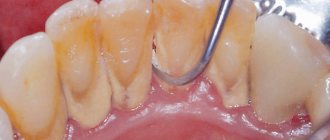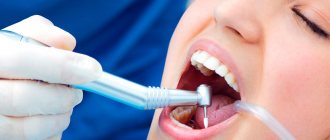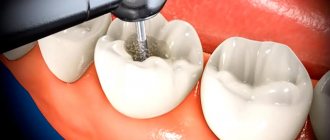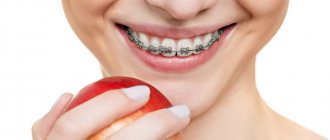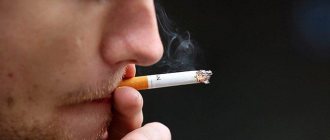What cannot be done and what is not allowed to eat after each ultrasonic teeth cleaning, how long after can one drink coffee, what recommendations do doctors give to patients who have undergone other hygiene procedures? Many people mistakenly believe that once you step outside the dental office, you can sparkle with a snow-white smile and at the same time eat whatever you want. In fact, it is important to maintain a certain time interval during which hard and soft tissues must fully recover after exposure to ultrasound.
There are also general care recommendations. Following these rules will ensure that the effect lasts for a long time.
How often can you have your teeth cleaned by the dentist?
It is better to visit the clinic once every six months. This is enough to prevent dental diseases and eliminate accumulated deposits.
The procedure itself does not last long, about half an hour or a little more. The doctor first assesses the condition of the oral cavity, and then gives an opinion on the possibility or impossibility of professional treatment. If necessary, filling is performed, implants, prostheses and other orthopedic structures are installed. Thus, if there is a pathological process in the mouth, it is first of all important to get rid of it, and only then begin to remove plaque and whiten the units.
What dental diseases can be caused by smoking?
If your teeth hurt after smoking or dry mouth has become a common occurrence after smoking, you are faced with the first symptomatic manifestations of severe dental diseases. As a rule, these symptoms appear after a smoker’s plaque appears on the teeth.
Lack of timely diagnosis and subsequent dental treatment can cause the development of the following pathologies:
- Bacterial infections and inflammatory processes - there is an unpleasant odor in the mouth, swelling of the mucous membrane, pain in the gums when eating food;
- Halitosis is a pathological process caused by the accumulation of combustion products in saliva and oral tissues with the subsequent release of sulfur compounds;
- Gingivitis is an acute inflammation of the gums, which may be accompanied by a purulent process in the oral mucosa.
- Periodontitis – in the initial stages of development, can be practically asymptomatic: there is no bleeding, hyperemia of the mucous membranes, or pain. But over time, the patient feels a gradual increase in the mobility of the teeth, until they fall out;
- Nicotine stomatitis is a companion for novice smokers, including vapers. Accompanied by dilation of large vessels and redness of the palate. As the problem develops, the mucous membrane becomes rough, microorganisms begin to develop on it, forming a characteristic white coating with a strong unpleasant odor.
In addition to the above problems, as well as yellow teeth after smoking, a bad habit can provoke a number of pathologies in other human organs and systems, including cancer of the respiratory system. For this reason, many dentists recommend that the patient choose between smoking and teeth.
Today, cigarette plaque can be removed from teeth using professional whitening methods. At the same time, dental pathologies are a problem of the whole organism, which is often solved by radical methods, including the removal of the causative teeth.
Is it possible to drink
Drinking, of course, is not contraindicated. It is important to choose suitable drinks that cannot provoke darkening of hard tissues and inflammation of soft tissues. Pigments in sweet soda, compotes, concentrated juices, fruit drinks, tea and coffee products color cleaned incisors, fangs and molars. Let's figure out what you can and cannot do after professional teeth cleaning: why there is a 2-3 week ban on eating your favorite foods.
Is tea allowed
Black is contraindicated in any form or concentration. As for green, everything is not so clear-cut. It is very useful for the oral cavity, as it helps strengthen enamel, eliminates bacterial flora, and reduces the risk of caries.
At first glance, it seems that a practically colorless liquid cannot lead to coloration. However, in fact, it contains tanning components that provoke yellowness.
Thus, hygienists do not advise drinking any existing varieties of tea for 2-3 weeks.
Is coffee allowed
When researching the question of whether you can eat, smoke or drink after brushing your teeth, the first drinks that come to mind are those containing caffeine. This product is classified as prohibited because it contains a pigment that darkens the enamel. If you don’t have the strength to give up your favorite invigorating energy drink, it’s enough to go without it for a couple of days, but it’s better to abstain throughout the entire recovery period.
If you ignore this advice, the incisors, canines and molars will become gray and take on a shade even darker than they were before the ultrasound. All microscopic cracks, chips and pores are pigmented, and it will be extremely difficult to remove all this from the surfaces.
Some patients can still keep coffee in their diet, but only if they dilute it heavily with milk or cream in advance, cool it to a comfortable room temperature and drink through a straw. After this, it is important to rinse your mouth with clean drinking water or a special mouthwash.
Alcohol
Alcoholic drinks are not a contraindication after professional teeth cleaning; dentists do not express categorical prohibitions. The product does not have a negative effect on cleaned enamel. However, it is important to remember that some of its varieties are undesirable to use.
After cleansing and bleaching, you should not use products with dyes. If they are present, it is better to refrain from drinking. This feature is typical for wine (contains coloring substances of natural origin), low-alcohol cocktails of bright colors. Any alcohol that has been kept in the refrigerator for a long time is also contraindicated.
If you do drink the drink, you must rinse your mouth thoroughly afterwards. It is advisable to use a special rinse aid, but if it is not available, you can take clean drinking water.
Most doctors still recommend abstaining from alcoholic beverages for a couple of days. This will help consolidate the results of cleansing procedures and protect the person from possible negative consequences.
The mechanism of the effect of cigarettes on teeth
Carcinogens and tarry substances released by tobacco during its smoldering settle on the surface of the tongue, gums, and oral mucosa. With each new cigarette, the layer of these substances thickens. Bacterial microflora quickly multiplies underneath it, leading to an inflammatory process.
Important: The number of cigarettes smoked is directly proportional to the risk of developing periodontal disease. According to medical statistics, about 95% of smokers aged 35-45 years experience periodontitis. However, in 90% of them treatment is ineffective. This threatens complete loss of teeth by the age of 70-75.
Cigarette smoke can cause enamel cracking. The healthy microflora of the mouth is disrupted. The oral cavity is affected by toxins released during the combustion of tobacco. Among them:
- Resins.
- Hydrocyanic acid.
- Methane.
- Nicotine.
- Tar.
- Ammonia derivatives.
The raid seems safe only at first glance. In fact, it settles in the deep layers of enamel, in every microcrack, and can even affect the top layer of dentin (the base of the tooth). Bacteria, food, and tar released by tobacco penetrate into small cracks. This is why teeth lose their natural, white tint and it becomes impossible to remove plaque with a toothbrush. The shade of the enamel becomes brown, gray or yellow. Over time, hard-to-remove black deposits form on the dental tissues at the roots of the teeth.
Is it possible to smoke
What you should not do after having your teeth professionally cleaned by the dentist is go back to smoking cigarettes. Nicotine is a powerful colorant, just like coffee and wine. Resins, along with carcinogenic substances, settle on the hard surfaces of incisors, canines and molars, creating an ideal environment for the growth and reproduction of pathogenic microorganisms. Tobacco in general has a negative effect on bone tissue, promoting its destruction and killing beneficial bacteria.
When cleaning is carried out in the dental office, the protective film is removed from the enamel. As a result, the outer layer absorbs resinous compounds and acquires a yellowish tint after just a few days.
Also, during the procedure, the mucous membranes may be damaged. Toxins from cigarettes get inside and provoke a severe inflammatory process that can spread to the entire maxillofacial apparatus.
Smokers often suffer from bleeding, dry and loose gums. The capillaries narrow, and the gum tissue weakens, becomes dehydrated, and the oxygen concentration decreases. Because of this, caries, pulpitis, gingivitis, and periodontal disease occur. If you do not wait for healing and smoke, infection will occur, which can subsequently lead to destruction and loss of teeth.
Teeth whitening methods
There are several whitening methods:
- Mechanical cleaning Air-flow. It has weak whitening compared to other methods, but it also has the safest effect. Includes high pressure water, air and sodium bicarbonate abrasive. The narrow tip of the sandblaster produces a thin stream with strong pressure, through which the dentist cleans plaque from each tooth. If tartar is present, the patient is first removed with ultrasound. As a result, the enamel is cleared of impurities and becomes lighter, but the yellow pigment does not discolor. However, increased tooth sensitivity after the procedure goes away faster than with intensive whitening methods.
- Photobleaching. Application of a teeth whitening gel to the enamel, which does not begin to act until high-intensity light rays are directed at it. Under the influence of light, the composition with hydrogen peroxide and carbamide oxidizes and penetrates deeper into hard tissues, discoloring them. It is preferable to use an LED or halogen lamp instead of an ultraviolet lamp, as they emit cold light and heat should be avoided during oxidation. A course of procedures can whiten by 10, and in some cases, by 12 tones.
- Laser. Just like with photobleaching, a gel based on hydrogen peroxide is applied to the enamel, and then its properties are activated. Only in this case, the catalyst for the chemical reaction is not intense light, but a laser beam, which the doctor directs one at a time to each tooth being whitened.
- Chemical. It differs in that a stream of light or laser is not required to oxidize the bleaching composition. The reaction occurs gradually, without additional exposure. The gel is applied to the teeth and left for a while, and then removed. In this way, teeth can become whiter by 5–7 shades.
- Endobleaching. It is used in cases where the crown of the tooth darkens from the inside. Most often this happens after injury (due to hemorrhage into the pulp), due to death or removal of the nerve, due to a reaction to the filling material. Then a whitening compound is injected into the crown through a drilled hole, and the whole thing is closed with a filling. This operation is not performed on “living” teeth, only on pulpless ones.
Modern dentistry can allow a patient to get the smile of their dreams in just an hour. But you should not think that eliminating yellowness acquired as a result of smoking, drinking strong coffee and chocolate in large quantities means that after teeth whitening you can do the same thing with the same success. After treatment with bleaching compounds, enamel becomes more sensitive and vulnerable, and it requires time to recover.
In fact, the surface of the tooth is not perfectly smooth: its microrelief includes, in addition to smooth areas, hills and depressions. After bleaching, the enamel is deprived of its protein film (pellicles) and its upper uneven layer is exposed, to which new contaminants quickly “attach.” And whitening sessions are not recommended to be done frequently, as this causes the enamel to demineralize, becoming vulnerable to the formation of tartar and even cracks.
Whitening affects not only the surface of the tooth, but also the next layer of its structure. When cleaning the enamel alone, you won’t get a Hollywood smile, because yellowish dentin shines through its translucent layer. When the whitening gel oxidizes, the permeability of the enamel increases, and the composition penetrates deeper, discoloring the dentin and affecting the nerve endings located in it. Because of this, teeth react especially sharply to cold, hot liquid, acid and other irritants.
Therefore, one of the conditions for successful rehabilitation is diet. The white diet, also known as colorless, involves excluding from the diet foods and drinks that contain acid and coloring matter.
Why does my breath smell even after brushing my teeth?
An unpleasant odor in most cases appears when hard and soft deposits accumulate in the interdental spaces. Therefore, the main reason for its persistence after ultrasound remains poor cleaning of the oral cavity. Most often, dentists do not clean the subgingival space well enough. In this situation, periodontal pockets accumulate plaque and periodontitis or periodontal disease develops.
If the patient is absolutely healthy, the following factors can lead to halitosis:
- Poor hygiene. If a person continues to use a brush with paste irregularly, the effect of professional cleansing will quickly disappear.
- Insufficient cleanliness of removable structures after prosthetics.
- Including foods that have a strong smell in your diet. This includes onions, garlic, canned fish, etc.
- Inflammatory processes, extensive carious lesions, neoplasms (cysts).
- Problems with the gastrointestinal tract (gastritis, peptic ulcer), liver, kidneys.
- Chronic diseases of the upper respiratory tract (tonsillitis, sinusitis).
- Diabetes mellitus (acetone smell is noticeable from the mouth).
- Drug therapy using certain drugs (antibacterial agents, antidepressants, allergy medications and high or low blood pressure).
- Pathological dryness of mucous membranes. The mouth does not produce enough saliva. It is needed not only for moisturizing soft and hard tissues, but also for removing pathogenic agents (bacteria, microbes) and regeneration.
If the stench persists after ultrasonic cleaning, it is recommended to visit a doctor. A dentist and other specialized specialists will be needed to establish the exact causes of this phenomenon and develop further therapeutic tactics.
Recommendations for what you can eat after professional teeth cleaning at the dentist
The procedure is safe and does not lead to negative consequences. However, hard and soft tissues are still injured to varying degrees. During the first few weeks, the enamel and gums are especially sensitive and require special care. Despite the fact that ultrasound is considered the most advanced and effective method, complications may arise in the form of inflammation and increased susceptibility to external influences.
Pro Tips:
- if the pain does not go away for a long time, painkillers do not help, then you need to urgently visit the dental clinic;
- To relieve the inflammatory process, pharmaceutical gels and ointments are used;
- it is important to monitor the nutrition and temperature of food and drinks;
- It's worth buying a suitable brush and paste.
When can you smoke after teeth whitening?
Smoking after teeth whitening in the first days is strictly prohibited. Resins from tobacco smoke settle on the enamel, contributing to the rapid formation of a new dark plaque. In addition, smoke always burns the teeth, even if the smoker himself does not feel the burn. And if he smokes in the cold, then the temperature difference in the oral cavity leads to microcracks.
Smoking after bleaching is contraindicated for at least two weeks, and it is better to endure without cigarettes for a month. This will help not harm your teeth while they are hypersensitive and vulnerable. Before bleaching, you should also abstain from tobacco for two weeks. In order to preserve your whiteness, you should quit smoking for good.
It is not easy to take all the precautions, but the results are worth it. With careful oral care and constant avoidance of cigarettes and coloring products, a spectacularly white smile can last more than a year, and possibly more than two years. If, after the mandatory two weeks, you return to smoking and your previous eating habits, then within a few months the surface of your teeth will turn yellow.
Rules for oral care after brushing
General principles, the observance of which will help prevent the development of complications and will allow you to maintain a snow-white smile for a long time:
- Change the brush if it is no longer suitable for use. With each use, pathogenic microorganisms accumulate on its surface, which can penetrate into wounds on the mucous membranes in the mouth and cause inflammation.
- Pastes without abrasives. Harsh products leave small scratches behind. During recovery, it is recommended to use cleansing gels; they are much more delicate. They must contain fluorine and calcium in sufficient concentration. If you need to restore your gums, the content of medicinal plant extracts in the product is important. Brushing your teeth, when you can already eat, smoke and drink (after the three-week period has expired), can be carried out as usual.
- Do not use rinses containing alcohol. Despite the fact that this is an excellent antiseptic, it causes irritation and pain. Disinfection can be achieved using safe Miramistin and Rotokan.
- Rinsing with herbal decoctions and infusions is prohibited. Otherwise, pigmentation and yellowing of incisors, canines and molars may appear. At the pharmacy you can buy special squeezes that do not lead to staining.
- Use of additional hygiene devices. To achieve the best effect, along with daily cleaning procedures, threads (floss), irrigators, and special brushes for interdental spaces are used.
- Applying applications. They help stop bleeding and inflammation, speed up the regeneration process. For this purpose, anti-inflammatory gels, for example, Metrogyl Denta, are applied to the mucous membranes.
- A diet excluding prohibited foods with pigments and irritating foods.
- Regular preventive examinations at the dentist. This should be done at least once a year. If the patient has dentures, is prone to carious lesions and other problems, visits to the doctor should be made every six months.
All of the tips listed above are suitable for any type of professional treatment, not just ultrasonic. If all recommendations are followed, full recovery is possible within 2-3 weeks.
